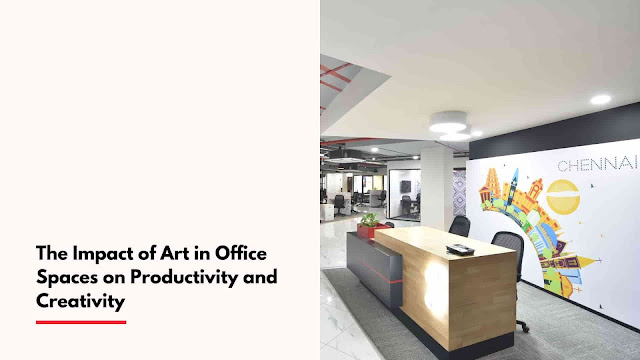The Impact of Art in Office Spaces on Productivity and Creativity
In the fast-paced world of business, the design of office spaces plays a crucial role in shaping the work environment. Beyond the ergonomic furniture and modern layout, the inclusion of art in office spaces has emerged as a significant factor influencing both productivity and creativity. As companies strive to create workplaces that inspire and motivate, understanding the impact of art becomes essential in achieving these goals.
What Kind of Art to Put in the Office?
Choosing the right type of art for an office requires a thoughtful approach. The selection should resonate with the company’s identity and the nature of its work. Commercial interior design experts often recommend a mix of visually stimulating elements that foster creativity without overwhelming the space. This could include vibrant paintings, strategically placed sculptures, or even digital art installations. Each piece should contribute to the overall aesthetic while complementing the company’s values and mission.
Why is Art Important in the Office?
Art in the office is more than mere decoration; it serves as a powerful tool to enhance the well-being of employees and elevate the work atmosphere. Research has consistently shown that exposure to art can reduce stress levels, increase job satisfaction, and boost creativity. In a world where employees spend a significant portion of their lives at work, creating an environment that promotes a positive mindset is not just a luxury but a necessity. Incorporating art into office design is a proactive step toward achieving this goal.
Three Types of Space Art
- Wall Art: Wall art serves as a focal point in many offices. From inspiring quotes to abstract paintings, the walls can become a canvas for creativity and motivation. Consider incorporating pieces that align with the company’s values or showcase its journey.
- Sculptures: Sculptures add a three-dimensional aspect to office spaces. They can be strategically placed in common areas, providing employees with points of interest and encouraging them to engage with their surroundings.
- Interactive Installations: Modern office design embraces interactive elements. Installations that respond to movement or touch not only add a contemporary flair but also foster a sense of engagement and collaboration among employees.
How to Arrange Art in an Office?
The placement of art in an office is as important as the selection of the pieces themselves. Design and build professionals emphasize the significance of strategic placement. Consider placing art in areas where employees gather, such as break rooms or collaborative spaces. Additionally, ensure proper lighting to accentuate the artwork and create a welcoming ambiance. By strategically arranging art, companies can enhance the overall visual appeal of the office while promoting a positive and inspiring work environment.
As companies continue to recognize the importance of a well-designed workspace, the integration of art emerges as a key factor in achieving a harmonious balance between productivity and creativity. By carefully selecting and thoughtfully placing art in the office, businesses can create environments that not only attract top talent but also empower employees to thrive. The journey toward a more inspiring workplace begins with a brushstroke, a sculpture, or an interactive installation – each contributing to a canvas that fosters innovation and success.






Comments
Post a Comment